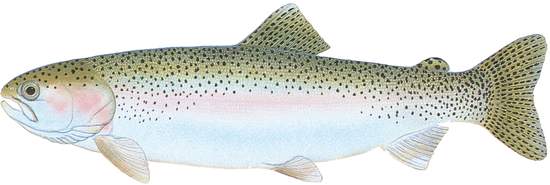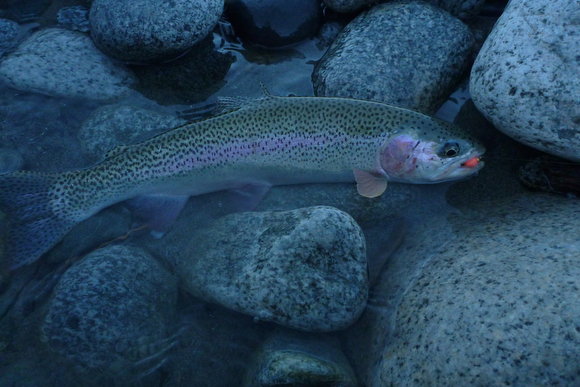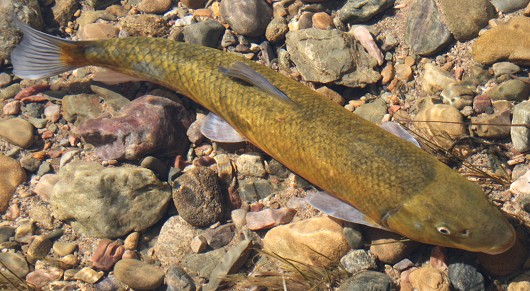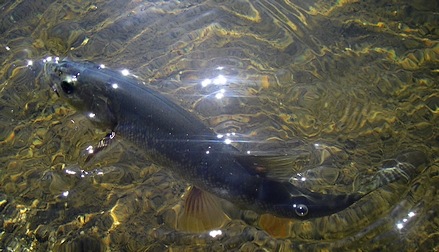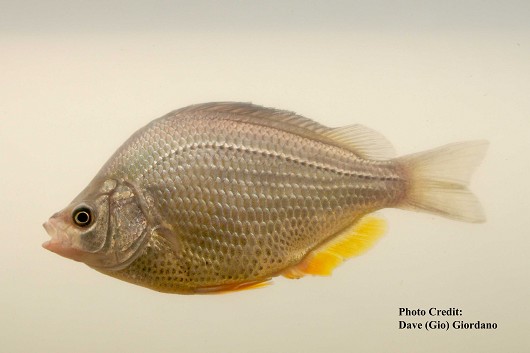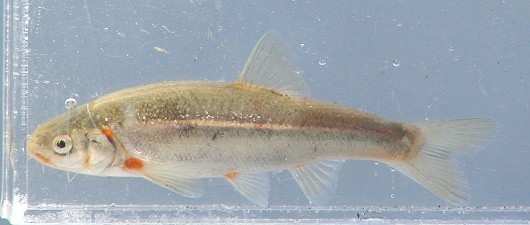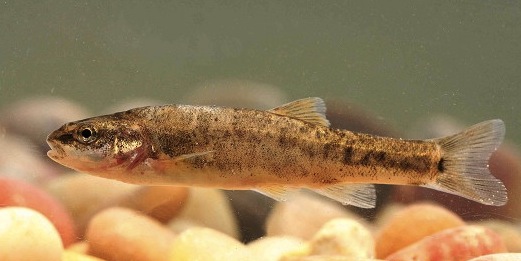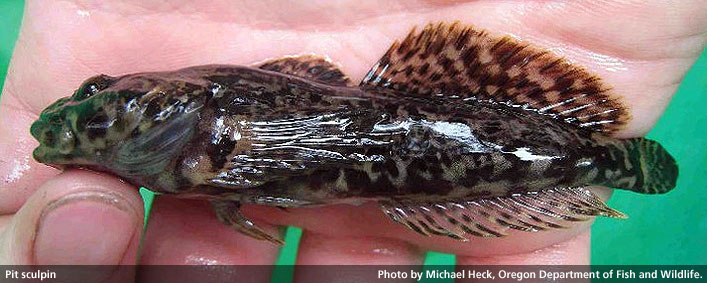Ahjoomah, or Achoma, is the Madesi word for “river,” and is the original name of the (later renamed by colonialist invaders) “Pit River”. It is a remarkable “freestone river”, with an incredible diverse abundance of varied geology, plants, animals, fungi, and water. The Pit River is the longest and largest tributary to the Sacramento River, and provides about 80% of the summer water flows to what is now the huge reservoir known as Shasta Lake. In other words, before Shasta Dam was built, the Pit River was part of the Sacramento River, and thus the longest and largest river in California. It is one of only three rivers that cross the Cascade Range and drain into the Pacific Ocean (the other two are the Klamath and the Columbia).
A freestone river is a type of river with a significant gradient resulting in medium to fast-moving water. Rock, gravel, and sand characterize the riverbeds, with continual input from flood events, erosion, landslides, etc. The in-stream rocks eventually become eroded and reduced to free moving, smooth stones, gravel and sand, hence the term “freestone.” In fact, the bottom of a freestone river is in constant motion, altering the very structure of its banks and its course. Its flow characteristics and geomorphology are therefore in constant flux. The vast majority of the Pit River’s flow comes from precipitation and spring-fed tributaries, especially in the volcanic Cascade Range region. The fast moving water inhibits the growth of rooted vegetation resulting in a “freestone” bottom.
Hydroelectric dams built in the first half of the twentieth century have drastically changed the original flows and the biology of the mighty river. Below each dam, the majority of the river water is diverted, which once even left some sections nearly dry. After nearly 70 years of such unregulated and under-regulated ecosystem abuse, the electric company (PG&E) was recently forced to allow more water to pass through the dams, instead of being diverted to the powerhouses. Flows on the Pit River increased significantly in 2011, reflecting the terms determined thru the 2003 FERC re-licensing process. The current dam permit requires minimum flows of 400 CFS (cubic feet per second) in the Big Bend “Pit 5 Reach” section of the river. This increase has resulted in less electricity generated, while improving the ecological health of the river and watershed. More information about the Pit River dams can be found on this web site, on the post called: “Damn! …Those Dams” (click to open the post in a new window).
Pit River Fishes and Mollusks
Below, are some of the fish, mussels, and snails of the mighty Ahjoooma in the Big Bend section, also known as the “Pit 5 Reach”. Unfortunately, the incredible (now listed as Endangered) anadromous Chinook Salmon no longer exist in the Pit River and its tributaries, due to the dams, but before 1942, Ahjoomah had one of the largest Salmon runs in the world. Unlike the “Biology” pages on this web site (on which all photos of various organisms were taken at the BBHS site), most of the fish and mollusk pictures on this page were not taken at BBHS.
1. Rainbow Trout (Oncorhynchus mykiss)
Rainbow Trout is a sustainable, low-mercury fish that’s labeled as a “best choice” by the USA EPA and FDA. This colorful patterned fish is a member of the salmon family and is one of the healthiest fishes you can include in your diet. Plus, it’s an excellent alternative to the often-overfished salmon.
- Commonly 35-65 cm FL and 1.4-5.4 kg
- Large mouth with teeth on both upper and lower jaws
- Silvery body, black spots on the adipose, dorsal, and caudal fins, pink to red lateral band
- Juvenile fish have similar appearance, possess 5-13 dark spots called parr marks that run laterally along fish’s body, parr marks are smaller than the gaps between them
- Young fish also have 5-10 dark dorsal spots between the head and dorsal fin.
Rainbow Trout do not commonly live beyond 6 years, though fish have been recorded to reach 9-11 years. Within a stream resident rainbows have in-stream habitat preferences generally determined by size. The smallest fish are mostly found in riffles, medium sized fish in runs, and larger fish predominantly in pools. In streams and lakes rainbow trout feed on zooplankton, invertebrates, insects, drifting organisms, and sometimes other fish. Feeding usually peaks at dawn and dusk and summer consumption is greater than that in winter.
The ancestral origins of the rainbow trout in the Pit River remain unclear. These phenotypically unique trout are often referred to by the angling public as “Pit River rainbows,” implying a different strain than coastal rainbow trout. Our surveys confirmed that many of the rainbow trout observed exhibited bright coloration along the lateral line and on the opercula (pink to purplish band, some with faint parr marks retained into adulthood), yellowish ventral coloration and orange markings (cutthroat slashes) under the lower jaw. These phenotypic expressions are generally associated with redband trout. Given the Pit River’s historical and/or present hydrolological connection to both the Goose Lake Basin (and, therefore, potential downstream movement of Goose Lake redbands) and the Sacramento River (and therefore, coastal rainbow trout invasions from the lower end of the system), it is possible that the trout observed in the system today represent some intermediate between one or more forms of redband trout and coastal rainbow trout. However, no definitive genetic studies have been performed to clarify this issue. Further genetic sampling and analyses of the rainbow trout present throughout the Pit River system is recommended to elucidate the phylogenetic relationship(s) of rainbow trout in the Pit River to other trout forms in the greater Sacramento Fish Province. (From Pit River Summary Report July 2008 by Heritage and Wild Trout Program & California Department of Fish and Wildlife)
2. Sacramento Sucker (Catostomus occidentalis)
Sacramento Sucker Size: up to 56 cm
- Fleshy or “swollen” lips on sub terminal mouth
- Upper lip is covered in 4-6 rows of papillae, bottom lip symmetrically separated by deep indentation and lined with single row of papillae
- Dorsal fin longer than it is tall, positioned closer to tail than snout
- Green to brown back, yellow-gold to white underside
- Breeding fish develop red stripe on sides, both males and females may develop breeding tubercles.
- Juvenile suckers gray in color, slightly darker dorsal side
- Juvenile fish have 3-4 dark splotches on their body wall
Sacramento Suckers have a diet made up of mostly algae, invertebrates, and detritus. The larval suckers feed on detritus and browse the bottom in warm protected streams, while juvenile fish forage along the bottom of stream banks of these warm streams. Young fish may stay in this warm water for several years before moving into lakes or larger rivers. Adult fish typically rest or hold in the deeper water during the day and feed during the first and last hours of the day. The larger fish may occupy pools, runs, or riffles in area where vegetation or rocks provide cover from birds and other predators. Their diet consists mostly of diatoms and detritus, with invertebrates playing a smaller role. The fish tend to grow larger and more rapidly in warmer streams and lakes as opposed to streams that are cool year round. At age 4-6 Sacramento suckers become sexually mature and begin a spawning ritual that may involve a migration to a warmer and smaller stream. Spawning is triggered by the onset of warmer water temperatures and usually occurs between February and June.
3. Sacramento Pikeminnow (Ptychocheilus grandis)
The Sacramento Pikeminnow has a lateral line that moves upward as it approaches the gill plate, which is about the only distinguishing feature separating it from the equally common, Sacramento Sucker.
- Big elongated fish, may exceed 1 m TL, maximum 115 cm (14.6 kg)
- Flattened head, large mouth, deeply forked tail
- Bigger adults dark brown to olive in coloration, gold-yellow underside
- Smaller fish, silver, dark spot at the base of the tail
- Spawning fish may develop orange-reddish hue on tail, males may develop nodes or breeding tubercles on head
Note the size of the mouth, which is larger than that of a hardhead. Sacramento Pikeminnows, formerly known as “Squawfish”, grow and develop slowly but may reach great lengths, and ages in excess of 16 years. Younger fish feed and forage during the day, while adults tend to reside in deeper pools during the day and move into riffles to feed during dawn and dusk. Juveniles may feed on aquatic insects and change the focus of their diet to crustaceans and fish as they grow bigger. Large adults are voracious opportunistic predators and may take prey anywhere at anytime. In addition to fish, prey items may include: frogs, lamprey ammocoetes, large stoneflies, and even small rodents. At age 3-4, Sacramento pikeminnows become sexually mature and begin spawning in April – May.
4. Hardhead (Mylopharodon conocephalus)
- Large minnows, sometimes greater than 60 cm, (rarely exceed 30 cm in smaller streams).
- Slightly deeper bodied than Sacramento pikeminnow
- Less pointed snout than Sacramento pikeminnow
- Maxilla doesn’t extend past front margin of eye, has frenum (bridge of skin) connecting upper lip to snout (Sacramento pikeminnow lacks a frenum)
- Coloration: brown or dusky bronze back, silvery sides
- Young fish silver in color
The Hardhead – nearly indistinguishable from the Pikeminnow except in the larger sizes, where it’s entire belly becomes an orange-yellow. (whereas the Pikeminnow belly remains white). Hardhead may also inhabit lakes or reservoirs. All ages are omnivores though the juvenile and adult fish have a slightly different diet and tooth structure for feeding. In general these fish will eat benthic invertebrates, aquatic plants and algae, or insects. The young fish typically feed on mayfly and caddisfly larvae, as well as small snails. Older fish may focus on plants, crayfish, and larger invertebrates. In a lake environment the fish may also feed on zooplankton. Within a stream hardhead tend to prefer warmer temperatures than salmonids and they are often found associated with Pikeminnows and Suckers. Adult hardhead may live up to 9 or 10 years.
5. Tule Perch (Hysterocarpus traski)
Tule Perch are very small little fish (10-15 cm or about 4-5 inches), and have a small terminal mouth, hump separates head from dorsal fin and a distinctive scale patch below dorsal fin. Within a river or stream Tule Perch tend to occupy deep pools that have complex cover in the form of aquatic and overhanging vegetation. They feed on invertebrates, plants, and zooplankton, mostly by swimming along the bottom of the stream. The perch may move into faster water for feeding by occupying small eddies and backwaters behind rocks and boulders.
6. Pit Roach (California Roach) (Lavinia symmetricus)
- Small chunky fish, usually less than 100 mm, rarely exceed 120 mm
- Large head, small downward turned mouth
- Coloration: body is usually gray to blue on top, silvery underside
- Spawning adults: may develop orange and red colorations on chin and paired fins.
7. Speckled Dace (Rhinichthys osculus)
The speckled dace is about 4 to 5 inches (10 to 13 cm) long. During breeding, many males often accompany a single female who broadcasts adhesive eggs over the gravelly streambed. Each female produces between 200 and 500 eggs. Speckled dace are omnivorous, feeding upon filamentous algae and other plant material, bottom-dwelling aquatic insects and zooplankton.
8. Pit Sculpin (Cottus pitensis)
In general, sculpins are among the most difficult fish to identify. Individuals of the same species can vary dramatically, and features that are pronounced on some may be absent on others. Sculpins are also very elusive fish that blend well with their habitats. The pit sculpin grows to approximately five inches in length. Unlike most of the other freshwater sculpins native to California, the two top fins (dorsal fins) are not connected at the base. The pit sculpin has dark botches on its sides and back. Sculpins are unique fish that have very few or no scales on their bodies! Most species of sculpin are marine species. Of the seven freshwater species native to California, six occur in BLM-managed waters. Pit Sculpins are found in the Pit River drainage and the upper Sacramento drainage. Whereas most sculpins prefer slower waters with muddy, sandy, or gravelly bottoms, the Pit Sculpin prefers rocky riffles in fast-moving waters. They almost always stay near the bottom of the streams and rivers, spending their days hiding under objects and coming out only at night to feed on invertebrates.
During the breeding season the males build nests under large rocks by scooping out depressions in the sand or gravel. Females lay their eggs at the top of the nest, on the underside of the large rock. Females leave the nest as soon as the eggs are laid, and the nest is protected by the male until the eggs hatch. Multiple females may lay eggs in the same nest.
~~~~~~~~~~~~~~~~~~~~~~~~~~~~~~~~~~~~~~~~~~~~~~~~~~~~~~~
Aquatic Mollusks
The river Ahjoomah has several species of native Aquatic Mollusks (mussels and snails)…
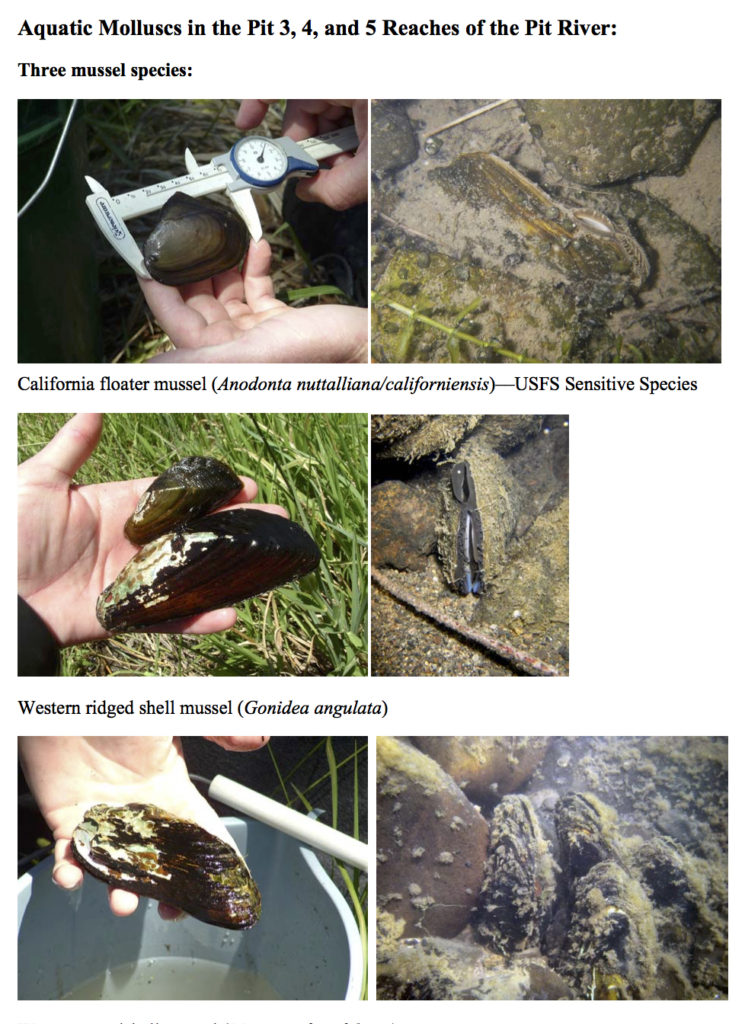
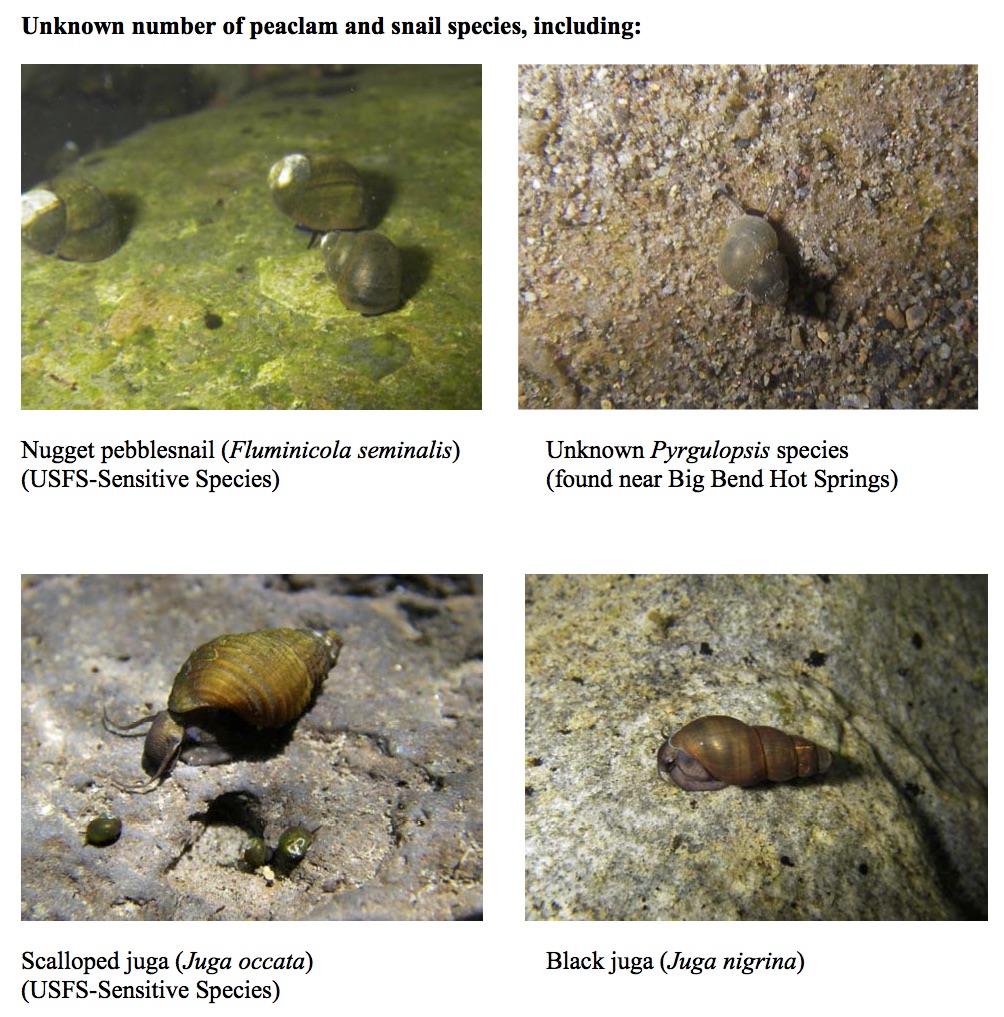
~~~~~~~~~~~~~~~~~~~~~~~~~~~~~~~~~~~~~~~
List of Fish found in Big Bend section of Ahjooma:
NATIVE SPECIES:
Petromyzonidae
Pit Brook Lamprey (Lampetra lethophaga)
Salmonidae
Redband/Rainbow Trout (Onchorhynchus mykiss)
Cyprinidae
Sacramento Pikeminnow (Ptychocheilus grandis)
Hardhead (Mylopharodon conocephalus)
Tui Chub (Siphateles thalassinus)
Speckled Dace (Rhinichthys osculus)
Pit Roach (Lavinia symmetricus)
Catostomidae
Sacramento sucker (Catostomus occidentalis)
Cottidae
Pit Sculpin (Cottus pitensis)
Embiotocidae
Tule Perch (Hysterocarpus traski)
INTRODUCED SPECIES:
Salmonidae
Brown Trout (introduced) (Salmo trutta)
Cyprinidae
Golden Shiner (introduced) (Notemigonus chrysoleucas)
Ictaluridae
Channel Catfish (introduced) (Ictalurus punctatus)
Brown Bullhead (introduced) (Ameiurus nebulosus)
Centrarchidae
Sacramento Perch (introduced) (Archoplites interruptus)
Largemouth Bass (introduced) (Micropterus salmoides)
Green Sunfish (introduced) (Lepomis cyanellus)
Bluegill (introduced) (Lepomis macrochirus)
~~~~~~~~~~~~~~~~~~~~~~~~~~~~~~~~~~~~~~~~~~~
? Smallmouth Bass (Micropterus dolomieu) ?

